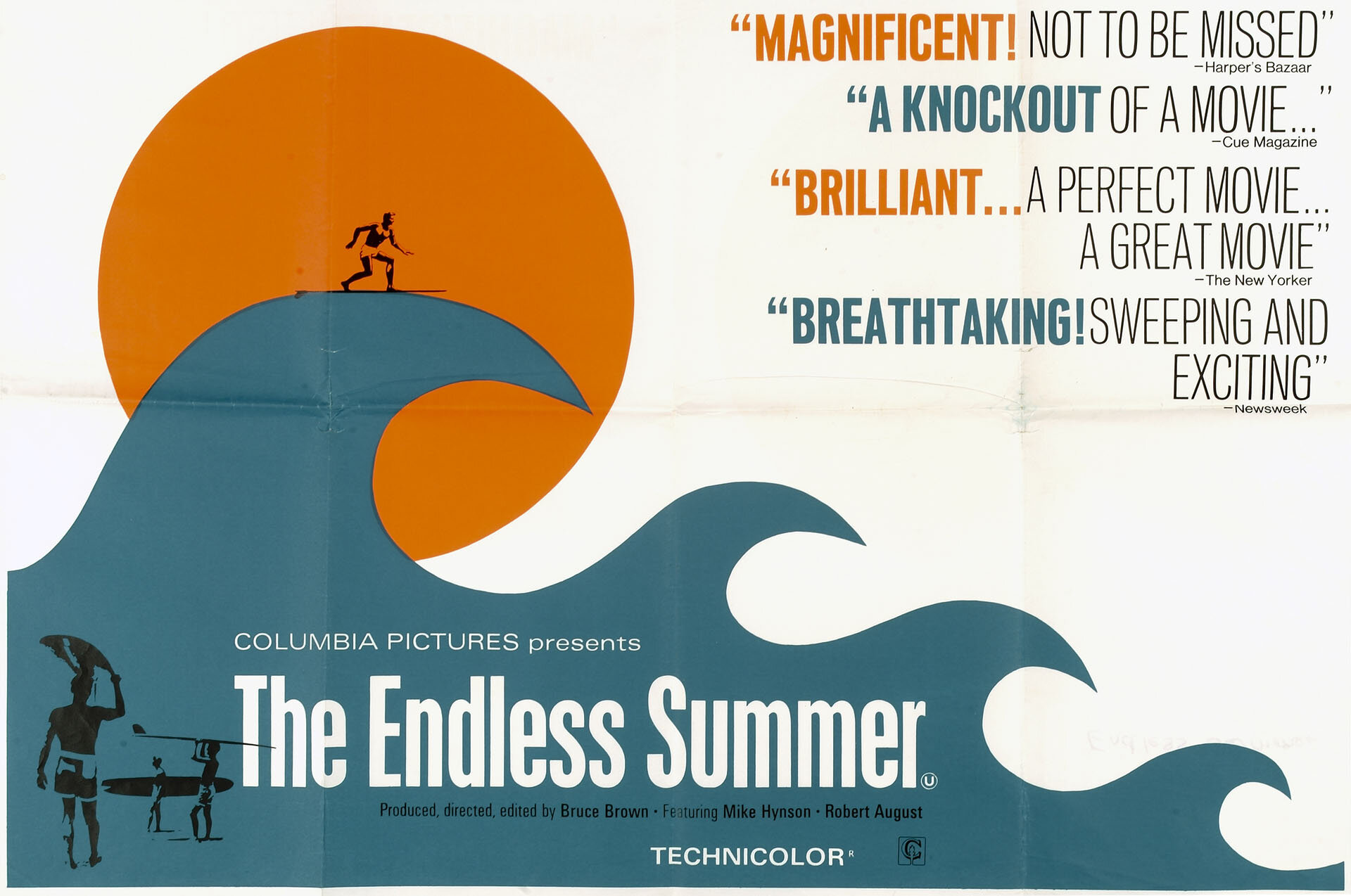Bruce Brown’s sixth film, The Endless Summer, is the archetypal tale of two California surfers, blond Mike Hynson and dark Robert August, hitting the road to follow summer and surf around the world.
Brown filmed in Senegal, Ghana, Nigeria, South Africa, Australia, New Zealand, Tahiti, Hawaii and California. Things didn’t always go according to plan, but Brown wasn’t the kind of guy who did all that much planning anyway. He was more in the school of flow. Somehow, even when they had no luck with the surf, something would happen. They’d meet someone (like future world champ Nat Young) and something happened.
So, a day late or not, everything turns out just as perfect as the wave they discover at Cape St. Francis in South Africa in one of the most revelatory and compelling moments in surf filmdom. There are bigger, better, scarier and more exciting waves in lots of other surf flicks, but none pay off quite as satisfyingly as “Bruce’s Beauties.” There, in that sequence, was magic indeed. When the film was finished, Brown knew he had something good in the can.
The Endless Summer was a big success on the circuit — so big that Brown and his promotions man, Paul Allen (who ran ahead arranging shows and coordinating publicity) thought they might be able to attract a national distributor. With Brown’s easy, homespun narration woven into a nice soundtrack by the Sandals, they worked on trying to sell it, came up dry and finally decided a test run in the U.S. heartland would be convincing, if it worked. So they booked a theater in Wichita, Kansas, and the film broke house records there for two solid weeks.
When that didn’t work, they took the film to Manhattan and booked it into the Kuyps Bay Theatre, where Brown charmed the bored Big Apple critics at a preview screening, telling them he’d paid a hundred bucks for the room, so he expected good reviews. He got them, and the rest is history.
“For some reason,” says Brown, “the real entrenched film critics seemed to like it, maybe because it was different from what they were used to seeing. We weren’t one of them, so a lot of the media in New York were into helping us out, not hurting us. If they did a review and wrote, ‘Brown did a shitty movie,’ we’d have been dead. But nobody knew who I was, and maybe they felt it wasn’t worth criticizing, so they pretty much gave us good reviews and helped us out.”
The Endless Summer played the Kuyps Bay for a year. Meanwhile, it was picked up by Cinema 5 for national (and then worldwide) distribution. The reaction of Kansans and New Yorkers was echoed by audiences around the country when the film finally went into distribution in 1966. It was similar to the reaction of the people crowding the beaches in Senegal and Ghana when Hynson and August paddled out and rode waves right in front of their villages — they were stoked! Brown, too, was stoked; his $50,000 investment brought him millions.




